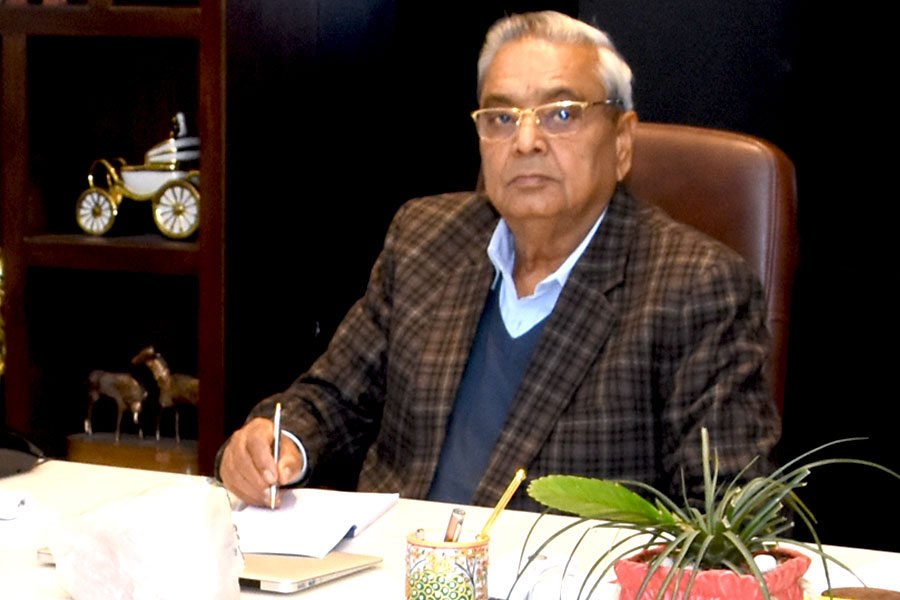World saw India as a reliable supplier of rice post-COVID
Nathi Ram Gupta, President, AIREA, is confident of a new record in rice exports in the current financial year due to bans imposed by Thailand and Vietnam, higher production and higher buying by importing countries. But he also highlights that shipment costs, shortage of containers and NTBs are acting as constraints for exporters.

IBT: India’s rice exports have grown at a strong pace in the post-COVID period. What are the major driving factors for this?
Nathi Ram Gupta: Yes, it is true that during the post COVID period India’s rice exports have shown a very good positive trend. During the period April-August, 2020, for which we have DGCIS data available, this trend is vindicated aptly. Non-Basmati rice exports have grown by 84% over the corresponding period of 2019-20, while Basmati rice has shown an upward trend by 23%.
| Basmati rice | April-Aug, 2019 | Apr-Aug, 2020 | YoY growth |
| Quantity (MT) | 1,654,510 | 2,034,642 | 22% |
| Value (Rs crore) | 12,621 | 13,659 | 8% |
| Value (US$ mn) | 1,771 | 1,709 | 2% |
| Non-Basmati rice | April-Aug, 2019 | Apr-Aug, 2020 | YoY growth |
| Quantity (MT) | 2,140,237 | 3,941,642 | 84% |
| Value (Rs crore) | 6,046 | 11,570 | 91% |
| Value (US$ mn) | 856 | 1,536 | 80% |
The major driving factors are:
(a) During the COVID period competitors like Thailand and Vietnam did ban export for some time, whereas India did not place any kind of restrictions. This made the world realize and appreciate India as a continuous, uninterrupted and reliable supplier.
(b) In non-Basmati rice, India’s production has been good and better than previous years, whereas countries like Thailand have suffered because of drought and resultant price rise. Today Indian non-basmati rice is better priced in the international market, contributing to good demand.
(c) Due to uncertainty about the future owing to the impact of COVID, several import dependent countries resorted to higher buying to ensure food security for their population.
While in non-Basmati category, African countries are buying huge quantities this year from India, Basmati rice is seeing higher exports to traditional markets of Middle East. But on the other hand, some countries in Africa and CIS have also bought significant quantities so far.
IBT: Recent reforms by the government have allowed contract farming and freedom for farmers to deal beyond APMC. How is this expected to affect exports?
Nathi Ram Gupta: On the face of it, the new arrangement is seen as a better option for everyone. But with some states not yet realizing the real benefits of the system as they are in opposition, it is too early to really make any comment on this. Exporters on their part are taking initiatives, but the results would be known only in due course.
IBT: Basmati rice exports have been impacted due to payment issues with Iran. What is the present situation, and how are exporters managing the challenge? What mechanism is being worked out?
Nathi Ram Gupta: True, Iran has been the top market for Indian Basmati rice with share of 30%+. This year, due to payment issues, there has been a drop in exports by 55% during April to August, 2020 over the corresponding period in 2019-20. But our exporters have stretched themselves and made extensive efforts to find alternative markets as well as strengthen their existing markets. The results are there to see, as is reflected in the data.
Although the latest feedback is that probably that the issue of stuck up payment is being resolved by the Iranian side, AIREA has represented to the Government to evolve a suitable alternate safer payment mechanism for trade with Iran.
IBT: What are the new market opportunities looking up for Basmati/non-Basmati rice exports for India in the post-pandemic situation? Do you see any significant change in rice consumption patterns in target markets?
Nathi Ram Gupta: As mentioned, India today is being seen by the world as a very reliable and cost competitive exporter of rice, and this is why many countries are turning towards India. We foresee a great year ahead and by the end o the current fiscal year, we could see a new record high in exports of rice from the country. Yet, this does not take away the challenges and difficulties being faced by trade, for which we will continue our efforts with the Government agencies.
IBT: How are shipment costs/delays impacting exporters? Also, any major NTBs that India is facing in this sector at present? Please elaborate.
Nathi Ram Gupta: Shipment costs are rising primarily due to the fact that there is a shortage of containers. Containers used to come from China because we were importing large quantities of products in the core sector. As imports have now drastically reduced, it has impaled the supply and availability of containers. Shipping lines have also increased freight charges. These two factors are severely affecting exports, which could otherwise have been much higher.
Presently the trade is struggling with a major NTB, which is the sanitary testing being imposed by various countries at par with EU norms for pesticide residues. Exporters have to incur a fair amount on getting the product tested and there is always a risk factor involved.
IBT: What value addition/product diversification (i.e. exploring more product varieties) can Indian rice exporters leverage in your view, given the current global market situation?
Nathi Ram Gupta: This is not really an issue for rice exports because there is a fairly large number of varieties of both Basmati and non-Basmati rice being cultivated in the country. The only major issues are of rationalization of freight costs, availability of containers, etc.













Leave a comment